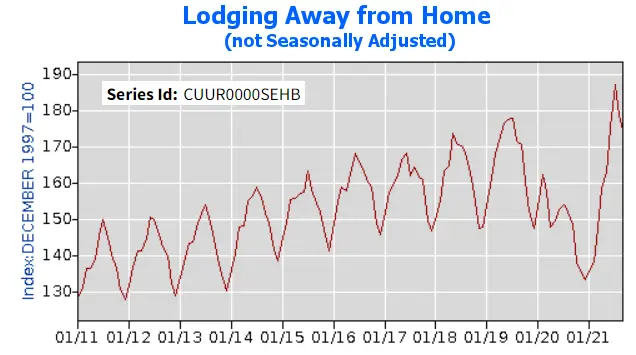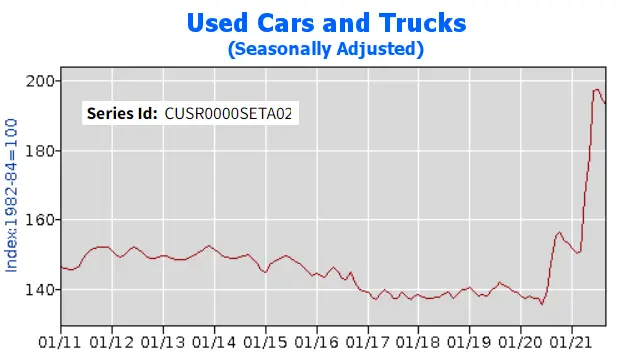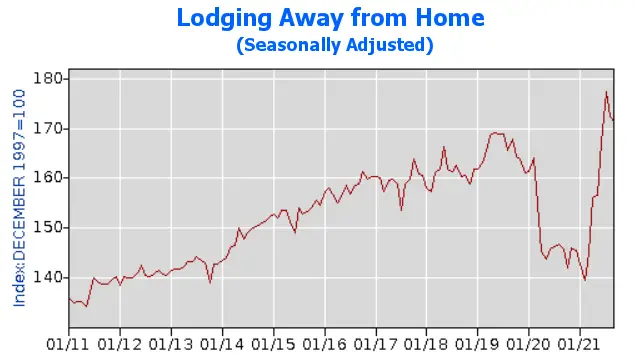Inflation has been apparent in the United States, making many people worry about financial stability in the nation. With the COVID-19 pandemic, there have been rising prices, labor shortages, and people wary about spending.
In this overview, we’ll explore how the U.S. inflation brought on by the pandemic has contributed to changing the financial and business landscape of the travel industry.
At First Glance
“The pandemic not only caused the shutdown of many companies and organizations but had also discouraged consumers from traveling to abide by social distancing mandates,” says Kendra Banks, a business writer at Uktopwriters. Rising airfares, price hikes on used vehicles, and people avoiding ‘lodging away from home’ resulted in a much lower demand for travel-related commodities and services. However, once the pandemic began to recede, along came travel price inflation, or what can be called a “re-inflation” after the economic depression brought on by COVID-19. As a result, the travel industry may actually benefit during this ‘re-inflation,’ despite the fact that the industry itself is facing price inflation, when it comes to travel costs, lodging costs, and so on.”
Car Rentals
During the pandemic, car rental companies saw a decrease in demand for rental vehicles. People who were stuck at home weren’t renting cars. According to the Seattle Times, the pandemic caused rental companies to sell off more than 770,000 cars as people were encouraged to stay home. This unprecedented sale of used rental vehicles drastically increased the supply of used cars, driving used car prices way below normal.
But now, in 2021, car companies are trying to rebuild their inventory for the incoming consumer travel seasons. As a result, rental prices have skyrocketed until there are sufficient rentals available to fulfill all of the public demand.
This increased demand for new vehicles to restock the rental companies combined with a computer chip shortage that slowed car production has resulted in a spike in new vehicle costs by 8.7% from September 2020 to September 2021, while delivery times have increased from a few weeks previously to several months now. Anecdotal stories of people ordering a new vehicle in February and only receiving it in October exist.
Since it is now difficult to get a new vehicle, demand for used vehicles is up this year. So increased demand combined with limited supply has driven used vehicle prices up an astounding 24.4%.
Hotels And Motels
As for the hotel sector, unemployment in the Leisure and Hospitality sector topped 8.7 million in March of 2020 alone. Since then, labor shortages have taken their toll on hotels and motels initially due to government subsidies that made it more profitable for these low-paid workers to stay home than to go to work. According to CNBC, consumers are already booking hotels ahead of the Christmas holiday rush. So, while hotels and motels are still looking for staff positions to fill, consumers have already begun planning for their Christmas vacations.
 Editor’s note: As you can see from the chart above Lodging away from home is very seasonal up until 2020. It started to proceed upward as normal and then fell drastically throughout 2020 (with a minor rebound mid-year). In 2021 it made up for the drop with a vengeance. Looking at it on a seasonally adjusted basis we can see how prices steadily climbed from 2011 through 2020, then fell drastically in 2020, and then more than recovered before shooting to new highs in 2021.
Editor’s note: As you can see from the chart above Lodging away from home is very seasonal up until 2020. It started to proceed upward as normal and then fell drastically throughout 2020 (with a minor rebound mid-year). In 2021 it made up for the drop with a vengeance. Looking at it on a seasonally adjusted basis we can see how prices steadily climbed from 2011 through 2020, then fell drastically in 2020, and then more than recovered before shooting to new highs in 2021.
Air Travel
Now, the domestic air travel industry is also slowly rebounding. However, like car companies and hospitality industries, there is more demand than supply. According to the U.S. Department of Transportation, the labor shortages in the air travel industry have resulted in the following:
- Cancellations
- Delays
- Baggage mishandlings
- Wheelchairs and scooters being mishandled
- Overselling and bumping
- Incidents with traveling animals
- Air service complaints
- Complaints from disabled passengers, AND
- Complaints about discrimination
Mandatory vaccine requirements have made the labor situation worse as many potential workers have been excluded from the workforce. Energy prices are up 24.8%, and jet fuel is up a whopping 81.9% over the year, but airfares are only up 0.8%, so airlines feel the squeeze.
Factors To Consider
“While many factors may have played a role in the travel industry under U.S. inflation, the scarcity in labor has been the biggest factor thus far,” says Geoffrey Bright, a finance blogger at Ukwritings. “Although supply disruptions were evident across many industries, the hotel sector, especially, had seen its fair share of labor shortages. With many people social distancing during the pandemic, people were discouraged from going out working in favor of either working from home or skipping work altogether.”
Conclusion
As you can see, the inflation brought on by the pandemic has shaken many travel-related industries causing decreased profitability in airlines, hotels, and rental companies.
Christina Lee is a writer and editor at Philosophy assignment help. As a project manager, she oversees various projects in many different companies nationwide. As a content writer, she writes articles about marketing and tech trends.
You might also like:




Leave a Reply